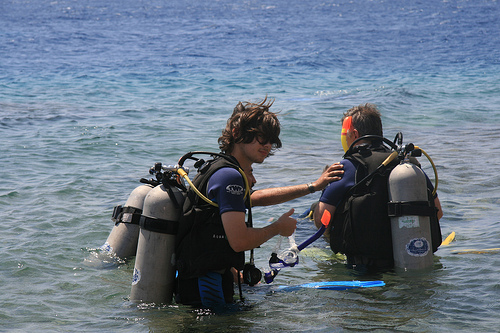According to FutureBrand, Australia earns the coveted spot as the world’s top country brand for the third consecutive year, according to the 2008 Country Brand Index (CBI) which will be officially released Tuesday, Nov. 11, 2008 at London’s World Travel Market,

the premier annual exhibition of the global travel trade. Rising from its sixth place ranking last year, Canada is recognized second and the United States rounds out the top three country brands in the 2008 study. Other countries making the top 10 include Italy, Switzerland and France. The CBI examines how countries are branded and ranked according to key criteria, and identifies emerging global trends in the world’s fastest growing economic sector – travel and tourism, which accounts for US$5.9 trillion of economic activity worldwide this year and more than 238 million jobs.
2008 CBI Top Country Brands
1. Australia
2. Canada
3. United States
4. Italy
5. Switzerland
6. France
7. New Zealand
8. United Kingdom
9. Japan
10. Sweden
CBI, now in its fourth year, is a comprehensive study of approximately 2,700 international business and leisure travelers from nine countries conducted by FutureBrand, a leading global brand consultancy, in conjunction with public relations firm Weber Shandwick’s Global Travel & Lifestyle Practice. This year’s index includes rankings and trends as well as travel motivations, challenges and opportunities within the worlds of travel, tourism and country branding (visit http://www.countrybrandindex.com for complete results).
Rising Stars
The CBI also identified China, the United Arab Emirates (UAE) and Croatia, respectively, as the top three “rising stars” – those likely to become major tourist destinations in the next five years. Also making the list this year are Vietnam, India and Cuba. In addition, this year’s CBI includes an in-depth report of how China fares post- Beijing Olympics.
“In this our fourth year, it is exciting to see many countries embracing the idea of brand. However, we still feel this is a largely underdeveloped category with most countries continuing to promote and market themselves in ways that are not differentiated. Particularly in the coming years, country brands must improve both their strategic orientation as well as their delivery,” said Rina Plapler, senior executive director, FutureBrand.
This year’s CBI touches on a variety of topics relevant to travelers and tourism professionals including: intergenerational travel (represented by countries such as the U.S., Canada and Japan), medical tourism, mainstream luxury (represented by countries like Japan and Spain), ‘stay’cations and a rise in the off-the-beaten-track trips. Other notable trends this year focus on niche travel opportunities and the changing destination landscape.
“With the current state of the world— economic turmoil, political unrest and global warming—it’s interesting to see which countries come out on top in branding themselves, generating global recognition and fueling the travel and tourism industry,” said René A. Mack, president, Weber Shandwick’s Travel & Lifestyle Global Practice.
The 2008 Country Brand Index reports a number of emerging trends in travel and tourism that include:
o Changing Landscape – Within the industry, there has been a significant shift in the countries that are experiencing real tourism growth. Traditional tourism “hotspots” are being overshadowed by rising star destinations. In terms of regional performance, Africa, Asia Pacific and the Middle East are experiencing higher growth rates than the average world demand. Chief among the changing landscape, citizens are becoming more outspoken about the brands their countries are aligning with to propel tourism, from branding efforts to logos to key messaging. The desire of many travelers to seek authentic vacation experiences has led to a rise in poverty travel – visiting poverty-stricken and/or polluted places and communities that showcase a reality otherwise unseen on an upscale or exotic expedition.
o Specialized Travel on the Rise – Rapid growth in formerly niche travel and tourism markets continues to be a trend within the industry, including:
o Rise of Women – Women are traveling more frequently without men, and women-only tours and retreats are becoming increasingly popular. Women comprise over half of adventure travelers worldwide.
o Grandchild on Board – Affluent retirees in the U.S., Canada and Japan are traveling more and more. Half of vacationing baby boomers are now traveling with their grandchildren, indicating a new segment of multi-generational travel.
o Finite Travel – There is a rise in people visiting places and/or species that are seen as endangered or in some form of time-related environmental risk. From polar bear and harp seal excursions to rain forest expeditions, many travelers are making it a priority to visit these places before they are
irrevocably altered.
o Spontaneous Travel – The biological imperative to escape will never go away, however, high pressured lifestyles and advances in online travel have resulted in consumers taking shorter trips each
year, often booked last minute.
o Religious Tourism – The concept of religious sites and pilgrimages is again becoming increasingly popular among travelers. For instance, the Vatican launched the world’s first airline for Catholic pilgrims. Specialized religious tours are catering to orthodox believers.
o Luxury Flying Upgrades – Responding to need, many airlines have developed greater flight options and service classes to cater to the lucrative luxury travel market. These include First and Business Class only airport terminals, as well as new and improved upper class sections in airplanes introduced by leading carriers such as Singapore Airlines and Emirates Airlines. Additionally, there are a variety of new alternatives to conventional air travel that provide greater flexibility to the luxury traveler. Chief among them is the increased availability of regional jets and air taxis. Airports are upgrading at a faster rate, with technological advances such as Radio Frequency Identity (RFID), smart ID cards and self-check-in playing a greater role in the airport experience. The check-in process is also continuing to evolve, as airlines like Air Canada continue to develop bar code technology to allow passengers to board solely with their cell phones (without a printed e-ticket).


